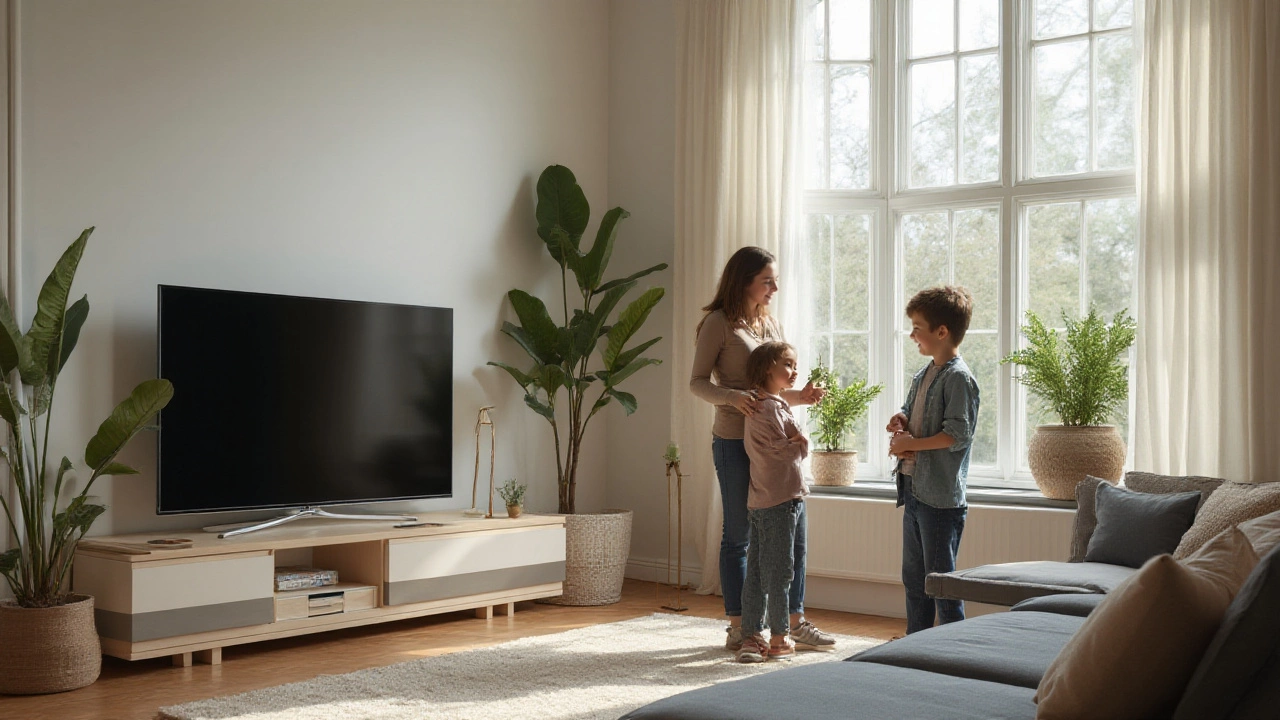TV Stand Size Guide: Choose the Perfect Width & Height
If you’ve just bought a new TV, the first thing you’ll wonder is – where does it go? A TV stand that’s too narrow looks cramped, while one that’s too wide eats up precious floor space. This guide walks you through the exact steps to pick a stand that fits your screen, your room, and your style, without any guesswork.
Measure Your TV and Your Space
Start with the screen’s width, not the diagonal. Look at the label or measure the bezel from edge to edge. Most flat‑screen TVs are about 5‑6 inches narrower than the diagonal number, so a 55‑inch TV is roughly 48 inches wide. Next, measure the wall or the area where the stand will sit. Leave at least 3‑4 inches of breathing room on each side – this keeps the view balanced and makes wiring easier.
Height matters too. The ideal eye‑level for watching is about 42‑44 inches from the floor when you’re seated. If your sofa seat is 18 inches high, aim for a stand that brings the TV’s center to roughly 30‑32 inches. That usually means a stand height of 20‑25 inches, but you can adjust with a wall‑mount or risers.
Standard Sizes and How to Fit Them
Most retailers list stands in three width categories: 40‑45 inches, 50‑55 inches, and 60‑70 inches. Use the TV‑width rule – the stand should be at least the same width as the TV, but having it 2‑4 inches wider looks more grounded. For a 50‑inch screen, a 54‑inch stand works well; for a 65‑inch TV, aim for a 70‑inch stand.
Depth is easier: a 12‑15 inch deep stand fits most modern TVs and leaves room for a cable box or soundbar. If you plan a bigger media console, make sure the depth doesn’t block the view from side seats. Check the weight rating on the stand; a large screen can weigh 50‑80 lbs, so you need a sturdy frame, preferably solid wood or metal.
Style choices don’t have to sacrifice function. Open shelving lets you hide wires, while glass tops keep the room feeling airy. If you love a rustic look, a reclaimed‑wood stand adds character and usually meets the weight needs of bigger TVs.
Don’t forget the safety side. Stand legs should be stable, and if the stand is tall, anchor it to the wall. This prevents wobble, especially in homes with kids or pets. A simple bracket kit does the trick and costs a few pounds.
Finally, think about future upgrades. If you might get a bigger TV in a few years, choose a stand a bit wider now. That saves you from buying a new piece later and keeps the room looking cohesive.
With these measurements and tips, you can pick a TV stand that looks good, works well, and lasts. Grab a tape measure, jot down your numbers, and you’ll be set for a living‑room makeover that feels just right.
Best TV Stand Size for a 55 Inch TV: Guide to TV Stand Width & Placement
Wondering what width of TV stand suits your 55 inch TV? Get the facts, space-saving ideas, placement tips, and design hacks right here so your setup looks and feels just right.
More
